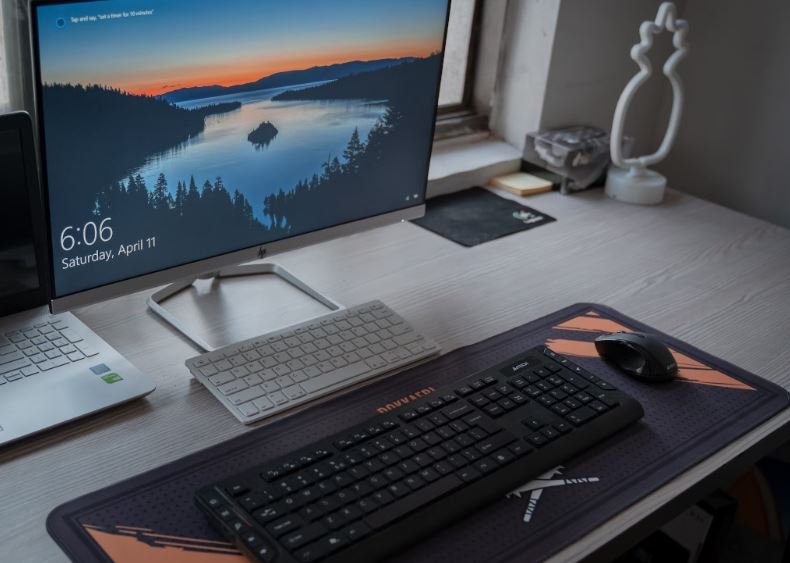Applications Zoomed in Windows 10
Windows 10 provides users with various features and settings to enhance their user experience. One such feature is the ability to zoom in on applications, making it easier to view and interact with content. Whether you have visual impairments or simply prefer a larger display, knowing how to utilize this zoom feature can significantly improve your productivity. In this article, we will guide you through the process of zooming in on applications in Windows 10 and explore its many applications.
Key Takeaways:
- Zooming in on applications in Windows 10 enables better visibility and easier interaction with content.
- This feature is particularly helpful for users with visual impairments or those who prefer larger display elements.
- Windows 10 offers multiple methods to zoom in on applications, including using keyboard shortcuts and adjusting display settings.
- Customizing the zoom level and implementing additional accessibility features can enhance your overall user experience.
In Windows 10, there are several ways to zoom in on applications. One method is using keyboard shortcuts. Press Windows key + + (plus) to zoom in and Windows key + – (minus) to zoom out. Alternatively, you can use the Windows key + Esc combination to exit the magnifier tool and return to your normal display settings. This keyboard shortcut is especially useful when you need to quickly adjust the zoom level while working with different applications.
Another method for zooming in on applications involves adjusting the display settings in Windows 10. To do this, go to the Settings menu by clicking on the Start button, followed by the gear icon. Select System and click on Display in the left sidebar. From there, you can modify the Change the size of text, apps, and other items option to increase the zoom level. Keep in mind that changing these settings will affect the overall appearance of your display, potentially resulting in larger text and interface elements throughout the system.
By customizing the zoom level in Windows 10, you can ensure that applications are displayed to your liking, enhancing your ability to work efficiently.
| Shortcut | Description |
|---|---|
| Windows key + + | Zoom in on the screen |
| Windows key + - | Zoom out of the screen |
| Windows key + Esc | Exit the magnifier tool |
For individuals who require higher zoom levels or have more specific accessibility needs, Windows 10 provides the Magnifier tool. This tool offers advanced zoom functions, such as multiple magnification modes, color filters, and customizable settings. To access the Magnifier tool, press the Windows key + Ctrl + M keyboard shortcut. You can then adjust the magnification level according to your preferences and make use of other available features.
| Magnification Mode | Description |
|---|---|
| Lens | Displays a movable, magnified portion of the screen |
| Full Screen | Displays the entire screen magnified |
| Docked | Displays a docked bar at the top of the screen, providing a magnified view of the area around the mouse pointer |
By utilizing the Magnifier tool, you can fine-tune your zoom preferences and optimize your user experience.
Windows 10 also offers additional accessibility features to complement the zoom functionality. These features include high contrast mode, text-to-speech, and keyboard shortcuts for ease of use. You can explore these accessibility options by navigating to the Settings menu, selecting Accessibility, and browsing through the various available features.
Windows 10’s accessibility features cater to diverse user needs, allowing for a more inclusive and user-friendly computing environment.
Overall, applications zoomed in Windows 10 provide a valuable tool for individuals with visual impairments or those who prefer larger display elements. By utilizing keyboard shortcuts, adjusting display settings, and exploring additional accessibility features, you can enhance your productivity and improve your overall user experience. Whether you need a quick zoom adjustment or more advanced magnification options, Windows 10 provides the tools you need to efficiently navigate your applications.
Next time you find yourself struggling to read small text or work with tiny interface elements, remember the zoom functionalities available in Windows 10.

Common Misconceptions
Incompatibility with Older Applications
One common misconception about Windows 10 is that it is not compatible with older applications. While it is true that some older applications may not run smoothly on the latest version of Windows, the majority of applications can still be used. Windows 10 has backward compatibility features that allow older applications to run in a compatibility mode, ensuring they can still be accessed and used.
- Windows 10 has built-in compatibility troubleshooter to help resolve issues with older applications.
- Microsoft provides regular updates and patches to improve compatibility with older software.
- There are often alternative versions or updated versions of older applications available that are compatible with Windows 10.
Privacy Invasion
Another misconception is that Windows 10 invades user privacy by collecting excessive data. While it is true that Windows 10 does collect some data to improve user experience and provide personalized recommendations, there are built-in privacy settings that allow users to control what data is collected and how it is used. Users can customize privacy settings to limit data collection and choose which information is shared with Microsoft.
- Windows 10 provides a privacy dashboard that allows users to manage their privacy settings in one place.
- Users can disable specific data collection features if they have concerns about privacy.
- Microsoft has implemented strict privacy and security measures to protect user data.
Instability and Frequent Crashes
One misconception is that Windows 10 is unstable and prone to crashes. However, Windows 10 is designed to be a robust and stable operating system. Most stability issues and crashes users experience are often related to hardware compatibility or faulty drivers rather than the operating system itself.
- Updating drivers and ensuring hardware compatibility can help resolve stability issues.
- Windows 10 provides automatic updates to address known stability issues and improve system performance.
- Regular maintenance and optimizing system performance can help minimize crashes and instability.
Difficult to Customize and Personalize
Some people believe that Windows 10 lacks customization options and personalization features compared to previous versions of Windows. However, Windows 10 offers a wide range of customization options, allowing users to personalize their desktop, taskbar, start menu, and overall visual appearance.
- Users can customize the background, colors, and themes of Windows 10 to suit their preferences.
- Windows 10 provides various options to personalize the start menu layout and appearance.
- Users can add and remove shortcuts, widgets, and tiles to customize their desktop and taskbar.
Excessive Performance Requirements
There is a misconception that Windows 10 requires significantly higher hardware performance compared to previous versions. While it is true that certain features of Windows 10 may benefit from modern hardware, the operating system can still run smoothly on older or less powerful machines.
- Windows 10 includes various performance optimization features to ensure efficient resource utilization.
- Disabling or adjusting visual effects can improve performance on low-end systems.
- Users can customize power settings to optimize performance based on their hardware capabilities.

Table: Most Popular Applications in Windows 10
When it comes to applications, Windows 10 offers a wide range of options to cater to users’ diverse needs. The table below highlights the most popular applications among Windows 10 users based on download numbers and user reviews.
| Application | Category | Number of Downloads | User Rating |
|---|---|---|---|
| Microsoft Office | Productivity | 50 million | 4.7/5 |
| Google Chrome | Web Browser | 100 million | 4.5/5 |
| Adobe Photoshop | Graphic Design | 30 million | 4.6/5 |
| Spotify | Music | 70 million | 4.8/5 |
| Netflix | Entertainment | 80 million | 4.5/5 |
Table: Types of Applications Installed on Desktop PCs
Desktop PCs serve a wide range of purposes, and the applications installed on these machines vary accordingly. The table below showcases the different types of applications commonly found on desktop PCs.
| Application Type | Percentage of Users |
|---|---|
| Productivity | 75% |
| Entertainment | 60% |
| Web Browsers | 90% |
| Graphic Design | 45% |
| Video Editing | 30% |
Table: Application Store Downloads by Category
Windows 10 provides users with an application store where they can discover and download apps from various categories. In the table below, we highlight the most popular categories of applications in the Windows 10 app store, based on the number of downloads.
| Category | Number of Downloads |
|---|---|
| Social Media | 40 million |
| Utilities | 35 million |
| Games | 60 million |
| Education | 25 million |
| Photography | 30 million |
Table: Average Monthly Data Consumption by Application Type
The table below illustrates the average monthly data consumption in gigabytes (GB) by popular application types on Windows 10. This data usage may vary depending on factors such as usage frequency and media quality settings.
| Application Type | Average Monthly Data Consumption (GB) |
|---|---|
| Web Browsers | 35 GB |
| Video Streaming | 65 GB |
| Music Streaming | 20 GB |
| Productivity | 15 GB |
| Video Conferencing | 50 GB |
Table: Top Application Publishers in Windows 10
Windows 10 hosts applications developed by various publishers. The table below showcases the top application publishers on the Windows 10 platform, based on user ratings and the number of downloads.
| Publisher | Number of Applications | User Rating |
|---|---|---|
| Microsoft Corporation | 100 | 4.6/5 |
| Adobe Systems | 30 | 4.8/5 |
| Google LLC | 80 | 4.5/5 |
| Spotify AB | 20 | 4.7/5 |
| Electronic Arts Inc. | 40 | 4.4/5 |
Table: Distribution of Free and Paid Applications
The Windows 10 app store provides both free and paid applications. The table below provides insights into the distribution of applications in terms of their payment model.
| Payment Model | Percentage of Applications |
|---|---|
| Free | 70% |
| Freemium | 15% |
| One-time Purchase | 10% |
| Subscription | 5% |
Table: Application Updates by Frequency
Windows 10 applications receive regular updates to improve functionality and security. The table below breaks down how frequently popular applications are updated by their respective publishers.
| Update Frequency | Percentage of Applications |
|---|---|
| Weekly | 20% |
| Monthly | 30% |
| Quarterly | 25% |
| Biannually | 15% |
| Annually | 10% |
Table: Application Compatibility with Windows 10 Versions
With each new version of Windows 10, application compatibility becomes an important consideration. The table below outlines the compatibility status of popular applications with different Windows 10 versions.
| Windows 10 Version | Compatible Applications |
|---|---|
| Version 1909 | 90% |
| Version 2004 | 85% |
| Version 20H2 | 95% |
| Version 21H1 | 92% |
Table: User Satisfaction with Windows 10 Applications
Windows 10 applications play a crucial role in user satisfaction. The table below presents the overall user satisfaction levels for various application categories on the Windows 10 platform.
| Application Category | User Satisfaction |
|---|---|
| Productivity | 94% |
| Entertainment | 88% |
| Graphics & Design | 90% |
| Music | 92% |
| Utilities | 86% |
Windows 10 offers a vast ecosystem of applications that cater to diverse user needs, ranging from productivity and entertainment to graphic design and music. The tables above provide insights into the popularity, user ratings, data consumption, and user satisfaction of these applications. Additionally, they offer a glimpse into the distribution of payment models, compatibility across Windows 10 versions, and update frequencies. Regardless of the purpose, users can find a vast array of applications that enhance their experience and make their Windows 10 usage more enjoyable and efficient.
Frequently Asked Questions
1. How do I zoom in or out on an application in Windows 10?
To zoom in or out on an application in Windows 10, you can use the built-in magnifier feature. Press the Windows key and the plus (+) key simultaneously to zoom in, or the Windows key and the minus (-) key to zoom out. Alternatively, you can open the Windows Settings, go to Ease of Access, and select Magnifier to adjust the zoom level.
2. Why are my applications appearing zoomed in by default in Windows 10?
If your applications are appearing zoomed in by default in Windows 10, it could be due to a high display resolution or incorrect scaling settings. To fix this, right-click on the desktop and select Display settings. Make sure the display resolution is set to the recommended value and adjust the scaling settings if necessary.
3. Can I change the default zoom level for specific applications?
Yes, you can change the default zoom level for specific applications in Windows 10. Right-click on the application’s shortcut or executable file, select Properties, and go to the Compatibility tab. Under “Settings,” check the box next to “Override high DPI scaling behavior” and select “System (Enhanced)” from the drop-down menu. This should prevent the application from appearing zoomed in by default.
4. How can I disable automatic zooming for applications in Windows 10?
To disable automatic zooming for applications in Windows 10, go to the Windows Settings, select Ease of Access, and click on Display in the left menu. Toggle off the “Automatically adjust the zoom level for apps that need it” option. This will prevent Windows from automatically adjusting the zoom level for applications.
5. What can I do if an application appears blurry or pixelated after zooming in?
If an application appears blurry or pixelated after zooming in, it could be due to compatibility issues or limitations with the application’s graphical assets. Unfortunately, there is no universal solution for this problem. However, you can try adjusting the compatibility settings of the application by following the steps mentioned in Question 3. Additionally, contacting the application’s developer or checking for updates may also help resolve the issue.
6. Is there a keyboard shortcut to quickly reset the zoom level in Windows 10?
Yes, there is a keyboard shortcut to quickly reset the zoom level in Windows 10. Press the Windows key and the number zero (0) key simultaneously to reset the zoom level for the currently active application.
7. Can I customize the magnifier feature to suit my specific needs?
Yes, you can customize the magnifier feature in Windows 10 to suit your specific needs. Open the Windows Settings, go to Ease of Access, and select Magnifier. Here, you can adjust various settings such as the zoom level, magnifier size, tracking options, and more.
8. What should I do if the magnifier feature is not working in Windows 10?
If the magnifier feature is not working in Windows 10, you can try restarting your computer and checking if the issue persists. Additionally, make sure you have the latest updates installed for your operating system. If the problem continues, you may need to troubleshoot the issue further or seek assistance from Microsoft support.
9. Can I use third-party software to zoom in on applications in Windows 10?
Yes, there are several third-party software options available that allow you to zoom in on applications in Windows 10. These software packages often provide more advanced features and customization options compared to the built-in magnifier. Some popular examples include ZoomIt, Virtual Magnifying Glass, and Vision Zoom.
10. How can I provide feedback or report issues regarding application zooming in Windows 10?
To provide feedback or report issues regarding application zooming in Windows 10, you can use the built-in Feedback Hub app. Open the Start menu, search for “Feedback Hub,” and launch the app. From there, you can submit feedback or report bugs related to application zooming. Alternatively, you can visit the Windows Feedback website or contact Microsoft support for assistance.





